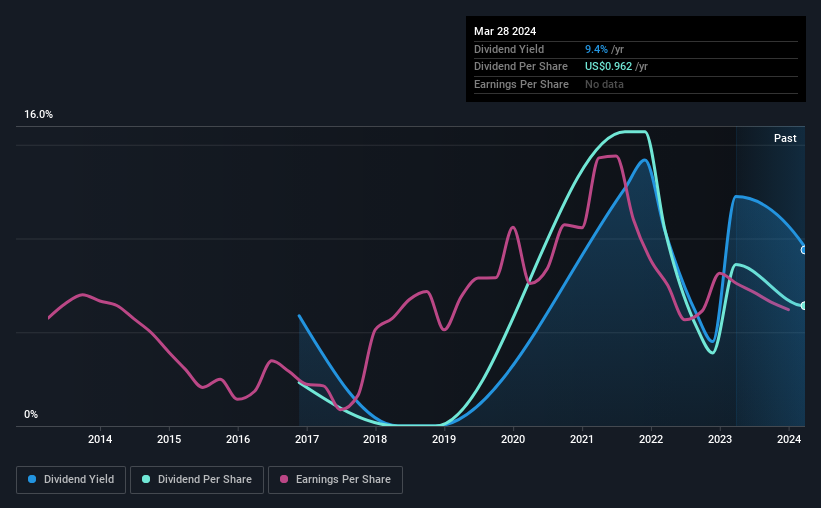G. Willi-Food International (NASDAQ:WILC) Will Pay A Dividend Of ₪0.20
The board of G. Willi-Food International Ltd. (NASDAQ:WILC) has announced that it will pay a dividend of ₪0.20 per share on the 17th of April. The yield is still above the industry average at 9.4%.
See our latest analysis for G. Willi-Food International
G. Willi-Food International's Payment Has Solid Earnings Coverage
We like to see robust dividend yields, but that doesn't matter if the payment isn't sustainable. The last payment was quite easily covered by earnings, but it made up 483% of cash flows. While the company may be more focused on returning cash to shareholders than growing the business at this time, we think that a cash payout ratio this high might expose the dividend to being cut if the business ran into some challenges.
Over the next year, EPS could expand by 3.9% if recent trends continue. If the dividend continues along recent trends, we estimate the payout ratio will be 17%, which is in the range that makes us comfortable with the sustainability of the dividend.
G. Willi-Food International's Dividend Has Lacked Consistency
Even in its relatively short history, the company has reduced the dividend at least once. This makes us cautious about the consistency of the dividend over a full economic cycle. The dividend has gone from an annual total of ₪1.28 in 2017 to the most recent total annual payment of ₪3.54. This implies that the company grew its distributions at a yearly rate of about 16% over that duration. It is great to see strong growth in the dividend payments, but cuts are concerning as it may indicate the payout policy is too ambitious.
Dividend Growth May Be Hard To Achieve
With a relatively unstable dividend, it's even more important to evaluate if earnings per share is growing, which could point to a growing dividend in the future. Earnings per share has been crawling upwards at 3.9% per year. Growth of 3.9% per annum is not particularly high, which might explain why the company is paying out a higher proportion of earnings. This could mean the dividend doesn't have the growth potential we look for going into the future.
In Summary
Overall, the dividend looks like it may have been a bit high, which explains why it has now been cut. While G. Willi-Food International is earning enough to cover the payments, the cash flows are lacking. This company is not in the top tier of income providing stocks.
Companies possessing a stable dividend policy will likely enjoy greater investor interest than those suffering from a more inconsistent approach. Meanwhile, despite the importance of dividend payments, they are not the only factors our readers should know when assessing a company. To that end, G. Willi-Food International has 3 warning signs (and 1 which makes us a bit uncomfortable) we think you should know about. If you are a dividend investor, you might also want to look at our curated list of high yield dividend stocks.
Have feedback on this article? Concerned about the content? Get in touch with us directly. Alternatively, email editorial-team (at) simplywallst.com.
This article by Simply Wall St is general in nature. We provide commentary based on historical data and analyst forecasts only using an unbiased methodology and our articles are not intended to be financial advice. It does not constitute a recommendation to buy or sell any stock, and does not take account of your objectives, or your financial situation. We aim to bring you long-term focused analysis driven by fundamental data. Note that our analysis may not factor in the latest price-sensitive company announcements or qualitative material. Simply Wall St has no position in any stocks mentioned.

 Yahoo Finance
Yahoo Finance 
